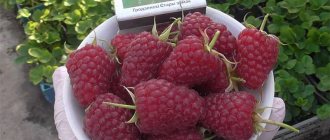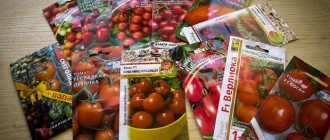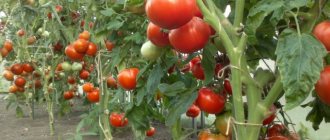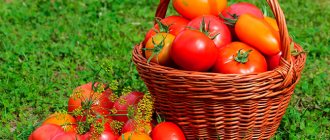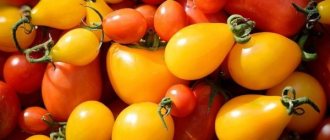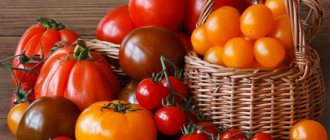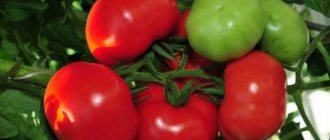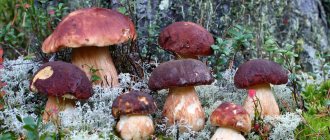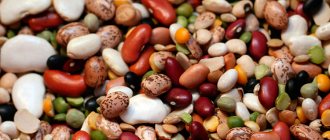Features of growing tomatoes in the Krasnodar region
Summer there is very hot. The summer resident must remember this when choosing species. It is better to choose tomatoes that are resistant to high temperatures and strong sun. For planting, zoned species are used. It is advisable to choose varieties that have wide leaves; vegetables grow under the cover of powerful green mass.
The Krasnodar region is very large; the Kuban River divides it. Each part differs from the other in climatic features. The northern part is characterized by an arid climate. And in the mountainous southern part there is often precipitation, so the climate is more humid, similar to the Stavropol Territory.
In the southern part, tomatoes are planted directly in open ground, and in the north they are grown using only seedlings.
general information
Tomato Kubanets is quite unpretentious; it prefers to grow in a mild climate, on the sea side, south of Tuapse. Here the conditions are most reminiscent of the homeland of tomatoes, sunny South America. Wild and semi-wild ancestors of modern varieties, well preserved to this day, are still found here.
The rest of the Krasnodar Territory is more arid, occupying more than 2/3 of the entire territory - about 70%. A conditional border can be drawn along the Kuban River, which divides the area into two unequal parts. The local conditions are more suitable for greenhouses than open vegetable growing. This will increase productivity and pay for the expensive design.
Given the high temperatures in summer, you should decide on the variety in advance. The foliage of the bushes should be dense, and the leaves themselves should be wide. That is, tomatoes for the Krasnodar region must grow inside the bush, securely covered with leaves from the scorching sun.
The intensity of sunlight can be controlled with polycarbonate blocks by installing them using a simple design over the beds.
The best varieties for the Krasnodar region
You can grow tomatoes in any conditions. Breeders are developing adapted varieties that can grow in a wide variety of climatic conditions.
Early cycle tomato varieties
Early types of tomatoes are grown by summer residents everywhere, regardless of their region of residence. Sweet Kuban tomatoes are valued by vegetable growers. This plant is a must for growing in any area.
Mystery
Tomatoes are ready to eat after 85 days, depending on care. The fruit is characterized by the presence of acid in its taste. The color of tomatoes is distinctly red. 5-6 fruits are formed on one brush. The bushes are low, 0.5 m, the stems are powerful and large. There is practically no need for pinning, and there is no need for tying to the supports. Plants are immune to many diseases.
Chinese
Universal tomatoes are suitable for any method of consumption and application. They ripen within 90-100 days after planting. There are a lot of fruits on the bushes, the yield is high. Especially if you remove the stepchildren correctly. The bushes are low, heavily leafy and unpretentious. The Chinese variety is very hardy and disease resistant.
Anastasia
Tomatoes form 5-7 tomatoes in bunches weighing 200 g. The fruits are red and do not differ in taste. A small green spot forms near the stalk, which will remain mature. With proper care, one plant produces 10-12 kg of tomatoes. It is easy to care for and resists late blight.
Persimmon
The orange fruits have a sweet taste. The harvest volume per plant is 5 kg. Tomato weight 200 g. Ripens in 115 days. It branches weakly, but due to its strong foliage, it hides the fruits well from the sun.
Salute or fireworks
The peculiarity of the variety is its decorativeness. At the same time, ripe fruits grow on 1 cluster, new ones are poured, the ovary is formed, and flowers bloom. Tomatoes are plum-shaped and bright yellow in color. The fruits are used for any method of application. The height of an adult bush reaches 0.8 m, it resists the tobacco mosaic virus.
Crimson Giant
Tomatoes are of different sizes, the maximum weight is 650-700 g. The ripe fruit is pink. The main purpose of the vegetable is to eat fresh. Housewives use it to prepare tomato paste and other processing methods. Depending on proper care, 1 bush produces 10-11 kg of tomatoes. Plants form 2-3 stems. The Raspberry Giant tomato is immune to common crop diseases.
Kubanets
The hybrid is immune to diseases and is able to grow and bear fruit under unfavorable conditions. The Kuban bears stress much easier than other brothers. The tomatoes are small, weighing 100 g. Up to 4-5 kg of tomatoes are harvested from 1 plant. Responds positively to feeding.
Medium and late ripening cycle tomato varieties
Tomatoes that ripen in August are used fresh and for winter preparations. Summer residents select varieties that satisfy the needs of the family.
Doo-karao
Color variety of fruits:
- red;
- pink;
- black;
- yellow.
See also
Preparations and methods for combating tomato cladosporiosis (brown spot)
Read
Tomatoes are mainly used for canning. The reason is the small size and high density of vegetables. The bushes are tall; if the growing point is not removed, the plant reaches a height of 3.5 m. Heat treatment preserves the structure of the fruit. Tomato immunity is average. The yield is 8.5-9 kg. Up to 12 fruits are formed in one brush.
Digitomandra
It grows up to 2 m, has a powerful stem and a strong root system. There are:
- Rotamer, its fruits are sweet;
- Inka Gold, the aftertaste is reminiscent of apricot;
- Solid Gold, this variety is used for making soups and purees.
If the necessary requirements of agricultural technology are met, 9 kg of vegetables are harvested from one plant. They are used for any purpose. The field health of the bushes is high. If you transplant the bush into a container and bring it into the house, Cyphomandra will bear fruit in winter.
Gift from Kuban
The plants are heavily leafy, the fruits are ready for consumption 115-125 days after planting. The fruits do not crack when ripe. The variety resists rot. Undemanding in care. Productivity 5 kg per plant.
Lemon Liana or Wonder of the World
The size of an adult plant is 2 m. The shape and color of the vegetable resembles a lemon. Maximum 1 tomato weighs 100 g. Ready for consumption 125 days after planting. This variety has high immunity to diseases characteristic of the crop.
Giant of the East or Giant Pink
Vegetables weigh 450-500 g, excellent taste, pink in color. The plant reaches a height of 2 m. Summer residents recommend planting bushes.
brindle
The variety got its name due to the unusual coloring of the tomatoes. They are dark pink with yellow stripes. The weight is small, the maximum weight of a tomato is 60 g. The ovary is formed in the clusters, and from 9 to 12 tomatoes ripen on one. If all agricultural technology requirements are met, 7 kg of tomatoes are harvested from 1 plant. The height of the plant is 2.5 m. Due to its unusual appearance, it is used for pickling or preparing assorted vegetables.
New from Kuban
Ripens 150 days after planting. The fruits are round. The weight of one tomato is 100 g. The total yield per 1 m2 is 7 kg. The bushes reach 40 cm in height. The purpose is universal. Approximate ripening time is 140-160 days. This type is used for mass assembly. Disease resistance is average.
Russian giant
Tomatoes of this variety are used for processing or use in salads. The bush grows up to 2 m. Requires pinching. The weight of one tomato is 500-600 g. Compliance with the requirements of agricultural technology will help you get a good harvest. 1 plant produces 6 kg of tomatoes. Manufacturers note high immunity to disease and resistance to pest attacks.
Universal varieties
No less in demand among summer residents are varieties that are grown both in greenhouses and in beds. Such species produce a bountiful harvest and are able to grow in any conditions.
Giant yellow
Early tomatoes, yellow in color. They weigh 200-300 g. They are used for all types of winter preparations and preparing salads. The height of tomatoes is 1.5 m. Summer residents recommend forming a bush with 2 stems. Tomatoes are ready for consumption after 120 days. From 1 bush you get 5-6 kg of fruit.
Bull's heart
A common type of tomato, familiar to summer residents for a long time. The fruits are valued for their fleshiness and sweet taste. The average weight is 350-400 g, some specimens reach 550-600 g. The height of the bushes reaches 1.5 m. With proper formation and implementation of agrotechnical techniques, 10-15 kg are obtained from 1 bush. The color of the fruits of this variety varies depending on the subspecies. The main purpose is fresh consumption.
Giant Novikova
The height of the bushes reaches 2 m. The fruits weigh about 1 kg. They carry out pinching and tying to the supports. Particular attention is paid to fixing the fruit clusters. Huge-sized tomatoes with proper care allow you to collect 20 kg of fruit from 1 bush. Otherwise, the plants are unpretentious and respond well to fertilizing. To increase yield, form into 1 stem.
Black Prince
The peculiarity of the plant variety is that it bears fruit over a long period. Tomatoes weigh 300 g. The height of the bushes is 1.8 m. The yield of 1 plant is 8 kg. Immunity is average, resistant to pests. Stepchildren must be removed.
See also
The best and most productive tomato varieties for growing in greenhouses in the Urals with a description
Read
To increase the size of fruits in open ground, the growing point is removed.
Raspberry lamp
There are no special features in caring for the plant. The bushes are unpretentious and undemanding. Plant height is 2.5 m. Proper care allows you to get 6 kg of tomatoes from 1 bush.
Hybrid varieties of tomatoes
Tomato hybrids are in demand among summer residents. They are unpretentious, hardy and very productive.
Merchant's wife F1
The variety is famous for its heat resistance, unpretentiousness and high immunity. Tomato weight 250 g. Universal purpose. Ripen in 90 days. Productivity 4.5-5 kg per plant.
Openwork F1
This variety is used for cultivation on an industrial scale. The reason is that when optimal conditions are created, the fruits retain their presentation and taste for up to 3 months. Plant height is 0.8 m, yield is 3.5-4 kg. The weight of one fruit is 300 g. The unpretentious bushes of the variety require virtually no care.
Fatty F1
High immunity makes it a favorite for many summer residents. The plants are low, 0.8 m, the stems are powerful. The fruits are 250-300 g, tasty and versatile in use. The fruits ripen within 115 days. The hybrid is unpretentious and undemanding in care.
Bourgeois F1
The versatility of using the fruit makes this variety popular among those summer residents who make mass harvests for the winter. The fruits are small, weighing 200 g. The plant reaches a size of 1.2 m.
Barin F1
Plant immunity is high, the fruits are used for any purpose. Virtually no shaping is required. The height of tomatoes reaches 0.8 m. A tomato weighs 250 g, the yield volume is 9 kg per 1 m2.
Agricultural technology
As you know, tomatoes can be grown:
- using seedlings;
- using the seedless method.
Both have an economic rationale. An arid climate requires the presence of seedlings and greenhouse conditions. Soft seaweed is native to tomato crops; here you can get by by sowing seeds in open beds.
The soil should be light and nutritious. A mixture of humus, sand and earth is ideal. Usually the soil is prepared in late autumn, spreading humus throughout the area. During the winter and part of spring it rests, some of the nutrients are absorbed into the soil with the help of melt water. After this, complex fertilizers are added and dug up. All that remains is to choose the right time to plant seedlings, care for them and wait for the harvest.
The soil characteristics in the Krasnodar region must be taken into account when planting. Arid steppe lands consist of carbonate, leached chernozems. Mineral feeding is needed here.
Complex fertilizers are usually used - the risk of overfeeding the plant with a single element is reduced. Sometimes there is a need for spot feeding of tomato varieties for the Krasnodar Territory - open ground allows the application of fertilizers using liquid or dry methods.
For these purposes they usually use:
- superphosphate (phosphorus content 20%) or double superphosphate (45%);
- potassium nitrate;
- urea
To plant bushes in such soil, it is pre-treated with all three types of fertilizers. The recommended ratio is 1:1:1. After the first fruits appear, the proportion is changed - 3:9:1.
The proportional composition of the fundamental elements in Krasnodar and the region is selected individually by region. The soil is different everywhere; after harvesting, its composition changes greatly. The increase in the amount of potassium and phosphorus during fruit formation is due to the increased need of the crop for these elements. Fertilizer application schedules can be considered as zoned - their composition varies over the entire area of the region.
The main thing is not to overfeed the plant. Increased levels of nitrogen, potassium, phosphorus, and magnesium lead to diseases, decreased yields, and slower growth.
Foliage is a kind of indicator of increased concentration of elements:
- magnesium, phosphorus - leads to blackening of leaves along the edges;
- nitrogen - yellowing;
- potassium - development of necrosis;
- calcium is a growth stimulator; the crop cannot cope with such a load and dies from a lack of other elements.
Every gardener before the start of the season wonders when to plant tomatoes. The usual period is 40 – 45 days before the start of disembarkation. When growing, they strive to create a plant that meets certain requirements:
- color - rich dark green;
- strong elastic leg;
- the number of fully formed leaves is 5 – 6;
- height - at least 20 - 30 cm;
- appearance is fresh.
You can use a planting calendar and decide when to plant tomato seedlings. It is also called lunar. It is believed that seedlings grow better when the moon is rising. Why is this happening? Perhaps the plant receives more moonlight or is exposed to gravitational fields.
Experienced gardeners plan in advance the time to plant tomatoes and study the weather forecast.
The main risks associated with its growth:
- You can get overgrown seedlings. In this case, it becomes unsuitable for planting. Before sowing tomatoes for seedlings, you need to plan fertilizing. When there is an overdose of beneficial elements, the sprouts grow too quickly. The stem turns out thin, unable to hold foliage and ovaries.
- Lack of lighting can cause the plant to grow rapidly. Usually in Kuban when the season begins, the weather is sunny. When growing at home, nuances are possible. To prevent this from happening, it is recommended to use artificial lighting. This is done using specially installed LED lamps in red, green, and blue colors. It is necessary that the light washes the plant - in this case, a thick stem and elastic foliage are formed.
- Usually they take a supply of three to ten days from the moment when the seeds are sown. This is done to check germination - low-quality seeds take a long time to produce the first shoots. Healthy, strong seeds produce the first shoots already on the third day after planting.
To check germination, your favorite or best tomato varieties must first be checked. Seed material is poured into warm water and waited for at least 10 minutes.
Healthy seeds will quickly become saturated with water and settle at the bottom of the container. Hollow ones will remain on the surface. They need to be sorted. It is not recommended to use hollow seeds.
Varieties suitable for growing in garden beds
It is advisable to grow varieties in open ground that are universal. It is advisable to plant hybrids; they are hardy, productive and undemanding to care.
You should choose from varieties:
- Bourgeois;
- Giant Novikova;
- Gift of Kuban;
- Kuban and other varieties.
When growing in open ground, it is necessary to choose varieties with a heavily leafy system.
Which are better to plant sweet large varieties of tomatoes for canning?
Anyone who wants to get a harvest in the form of sweet salad tomatoes gives preference to a vegetable crop that can satisfy this need. The product is used for preservation and fresh consumption.
Sweet million
Caring for this crop is not so easy, because the height of the bush reaches 2 meters. A large number can grow on it. The weight of one reaches 20 g. They can be used for salads and decorations for holiday dishes.
This self-pollinating species is considered the most popular and early ripening. Harvesting can be done as early as 95 days after harvest.
Sweet bunch
This drought-resistant crop allows you to get larger specimens. The weight of one reaches 40 g. Approximately 20 tomatoes can form on one brush. The variety is an early ripening variety; harvesting occurs within 90 days.
Sweet girl
Refers to early ripening varieties of tomatoes for open ground. You can get a harvest on day 95. It is better to grow in open areas, but it can also be grown in a greenhouse.
From one bush you can collect 13-18 pieces. The finished vegetable is characterized by an ellipse shape, dense pulp and a smooth surface. They have a red color and excellent taste.
Children's sweet
This heat-resistant hybrid belongs to the determinate varieties. Ripe samples are characterized by an ellipse shape. Weight reaches 30 g.
One brush can hold 15 tomatoes. The color of the product is deep red, and the pulp has an excellent taste. The vegetable is consumed fresh or for processing.
Which varieties are best suited for indoor soil?
A summer resident should choose between hybrids and universal varieties, since plants of these varieties are most suitable for protected soil. When choosing, you need to study the description.
Types for greenhouses:
- Giant Novikova;
- Raspberry lamp;
- Black Prince;
- Bull's heart and others.
Summer residents, following care and planting technologies, receive the declared harvest.
Heat-resistant varieties
For the Krasnodar region, these are the species that will help you get a harvest from tomatoes.
These include:
- Adeline;
- Maestro;
- Pink Andromeda;
- Asterix;
- Orpheus and others.
Heat-resistant tomato varieties. Types of Heat Tolerant Tomatoes
Vegetative bushes are heavily leafed and have numerous stepsons. Normally, such bushes are planted no more than 3 per square meter, be sure to remove the stepsons. When the shoots grow more than 10 cm, no more than 60% of the norm will bear fruit on the bunches of this type of tomato. But it is precisely these varieties that can provide the gardener with a harvest in hot weather and low humidity levels. Even with leaves curling and scorching, the foliage area is sufficient to protect most tomatoes from the sun.
The generative type of tomatoes has small foliage and few stepsons. Such varieties are good for northern regions, where their fruits can receive enough sun to ripen. But the abnormally hot summer of the last few years has played a cruel joke on them. Fruits not protected by “burnt” leaves do not ripen, although the ovaries initially promise a good harvest. The non-ripening of fruits is due to the small amount of the antioxidant lycopene in them, which is synthesized in the temperature range from 14 to 30°C. Without it, tomatoes do not turn red, remaining pale orange at best. Also, under such weather conditions, tomatoes develop blossom end rot. You need to plant generative tomatoes at least 4 per square meter, trying to preserve as much foliage as possible. Sometimes even by leaving a couple of leaves on the pinched stepsons.
Advice! If the summer is predicted to be hot and dry, then it is better to choose varieties and hybrids that are resistant to these conditions.
But in case of an error, you can try to save the harvest. When the night temperature is not lower than 18°, water the tomatoes in the evening. Tomato bushes are shaded with non-woven material. If possible, place a two-color film on the beds, white side up, to retain moisture in the soil and reduce soil temperature.
When growing indeterminate tomatoes in a greenhouse, you will need to open the greenhouse as much as possible. If it is possible to remove the side walls, then they should be removed. The windows also need to be opened and covered with non-woven material.
When choosing heat-resistant tomatoes, you can focus, if possible, on the appearance of the bush (whether the foliage protects the fruit) and the annotation of the manufacturer. Unfortunately, not all Russian companies consider it necessary to indicate on the packaging such an advantage of the variety as heat resistance. In this case, only experimental clarification of the qualities of tomatoes is possible.
Growing and caring for tomatoes in the Krasnodar region
Obtaining a high harvest depends on the hard work of the summer resident. It is important to follow simple recommendations, and the plants will reward you with fruits.
For open ground
You need to know exactly when to sow tomatoes for seedlings. Optimal timing: end of March - beginning of April. Growing strong planting material will allow you to get a good harvest of fruits.
Planting tomatoes is not difficult; you need to prepare containers, fill them with fertile soil and sow seeds in them.
Next, monitor the growth of the seedlings and, when ready, organize transplantation to a permanent place.
For greenhouses
Plant the seeds directly into the ground, immediately to a permanent place. Seeds are sown in prepared furrows. Then they are watered and covered with polyethylene.
Planting tomatoes in a greenhouse is not difficult; you just need to choose the right varieties.
Recommendations from Kuban gardeners
Owners of vegetable gardens in the Krasnodar region noticed that there is no particular difference between tomatoes grown through seedlings and without seedlings. Seeds sown directly into the ground germinate later than seedlings, but then the seedlings catch up and overtake the seedlings. But such plants are not afraid of low night temperatures and are less susceptible to diseases.
How to sow tomato seeds in the ground correctly
In the Kuban, gardeners have adapted to sowing sprouted and dry tomato seeds alternately, insuring themselves against weather troubles. The sprouted ones will grow earlier, but in case of return frosts the seedlings will die. Then they will be protected by seeds sown dry. If there are no troubles, then the seedlings will need to be thinned out.
After standard preparation of seeds for sowing: disinfection, heating, washing, some of the tomato seeds are germinated.
Seeds of different tomato varieties germinate differently. Some need 2-3 days, while others need more than a week. Taking this into account, you should try to germinate tomato seeds by mid-April. Usually by this time in the Krasnodar Territory the earth has already warmed up enough to allow early planting of vegetables.
Remembering that tomatoes are usually planted according to a 0.4x0.6 m pattern, holes are made with sides of 40x40 cm.
Important! The hole must be spilled with a solution of potassium permanganate to disinfect the soil.
After the entire area, sprouted and dry seeds are evenly distributed. With this technique, seed consumption is increased, but this protects against failure. The holes are not covered with anything. The emerging seedlings grow very slowly at first.
Thinning
The first time tomato seedlings are thinned out is after a pair of true leaves appear. You should try to leave those seedlings that are located at a distance of about 7 cm from each other, naturally, in any case, removing weak shoots of young tomatoes.
Thin out the second time, after the appearance of the 5th leaf, increasing the distance between young tomatoes to 15 cm.
For the third and last time, 3 to 4 tomatoes are left in the hole at a distance of 40 cm from each other. Excess plants can be removed or transplanted to another location. In the second case, before the last thinning, the hole is thoroughly watered to soften the soil. Excess tomato seedlings are carefully removed along with a lump of earth and transferred to a new location.
Transplanted tomatoes are watered with root growth stimulants. After the last thinning, all young tomato bushes must be mulched to avoid the appearance of a dry crust on the soil or loosen the soil after each watering.
Further care for tomatoes is carried out according to standard methods.
Rules for caring for plants
Leaving is half the battle. To get a harvest, it is necessary to carry out the following work:
- watering as the soil dries out;
- loosening or hilling, provides oxygen access to the root system;
- fertilizing, humus or complex mineral fertilizers are added as necessary;
- formation, pruning and pinching, removal of unnecessary shoots leads to an increase in yield.
- garter to supports, this applies to varieties above 0.9 m.
Pink heat resistant
Varieties of pink specimens are also presented in a variety of forms. However, compared to other tomatoes, they have many advantages. In addition to their amazing taste, such crops are easy to care for and have high yields.
Pink Elephant
This plant is characterized by the formation of a medium-sized bush. Up to 8 tomatoes can form on one brush. From one bush you can get a harvest of up to 3 kg.
The bush should be formed into one stem, it must be tied to a support.
Pink giant
This variety will produce a high yield only if it is provided with high-quality feeding. The weight of one fruit reaches 200-300 g. The color of the tomatoes is raspberry. The shape is flat-round.
This variety is suitable for those who love extra-large vegetables. If you plant and care correctly, you can get a tomato that weighs more than 1 kg.
How to grow seedlings in open ground can be found here.
Pink honey
This culture requires special care, attention and care. The plant does not tolerate too hot weather, so it is necessary to water it on time. The weight of one tomato reaches 200 g, they are red in color and have a round shape.
Puzata hut
In terms of the number of votes received, it was not far from Monomakh's Cap. The appearance of these tomatoes fully explains the name. Large (300 g), pear-shaped, ribbed, just like squat gnome houses, these tomatoes ripen early - 105-110 days after planting the seedlings. True, they turn red gradually if there is a lot of heat and sun. They are grown in open ground and under film, where they ripen faster. The fruits are fleshy, taste very sweet and juicy.
The bushes are indeterminate, but even in a greenhouse their height rarely exceeds 170 cm. However, it will not be possible to do without shaping. The stems are thin and need staking, as they can lie down under the weight of the fruit. And the yield of these tomatoes, ripening in clusters of 3-5 pieces, is quite decent - 10-11 kg per bush. They are little susceptible to common cultural diseases, but preventive protective measures have never hurt anyone.
“This year I also want a Puzata hut. Last year a friend had them - just a miracle!” Marina Samoilova.
Popular varieties for Siberia and the Urals
Everyone knows that the climate of Siberia and the Urals is cold. To grow a tomato in these conditions, it must resist frost and frequent temperature changes.
Siberian early ripening
This Siberian variety belongs to the mid-early variety. Tomatoes have a smooth surface and are medium in size. There is an average resistance to illnesses. The taste of the product is at the highest level.
Ground Gribovsky
The harvest occurs on the 100th day. The fruit is red in color and has slight ribbing. The variety is able to resist diseases and cold.
Altai early
The crop is early ripening and high-yielding. Harvesting occurs on days 100-105. Weight of tomatoes 400 g.
Koenigsberg
A mid-season variety of indeterminate (up to 2 m in height) tomatoes, which confidently took 10th place in our amateur rating. The first fruits usually ripen 110-115 days after sowing the seeds. Even beginners can cope with their cultivation. The variety has been tested and hardened in the harsh conditions of Siberia. Therefore, you can safely plant these tomatoes in open ground. Their productivity indicators are impressive - from 4 to 18 kg per 1 sq.m.
“Konigsberg performed well both in the greenhouse and in the OG.” Yuri Kuzminykh.
The oblong fruits ripen in clusters of 6 pieces, they weigh on average 300 g, under favorable conditions the weight can be 2-3 times higher than the standard declared by the manufacturer. Both the skin and the pulp of tomatoes are dense, which makes them easier to transport. Of course, they are healthier to eat fresh, but they are also very tasty in the form of juice, thick paste or sauce. There are varieties of red and yellow color (Golden Konigsberg).
“Konigsberg is an excellent variety, it bears fruit throughout October, from one bush to 2 buckets. In the greenhouse, of course." Lyudmila Petlyuk.
Cold-resistant
Currently, cold-resistant tomato varieties are produced in small quantities. But we can already highlight the most popular ones.
The Velvet season
This variety has a medium degree of ripening. The color of the tomatoes is red, the weight reaches 300 g. They can be used for pickling and preservation. The variety is characterized by high yield.
You can find out how Chinese cabbage is grown in open ground in this article.
Bull forehead
Mid-season variety, the fruits are red in color. The weight of one tomato reaches 600 g. It has a high yield. From one bush you can collect 8 kg.
Tomatoes of this variety are excellent for making salads, and they are also added to a variety of culinary dishes. The fruits of this variety also produce excellent pastes and juices.
De Barao
The bush is tall and the yield is excellent. The weight of one product is 60-70 g. The plant is not susceptible to viral diseases. The appearance is not lost during transportation. The variety is able to withstand frost and heat.
Large-fruited
As a rule, large-fruited crops are grown to decorate your plot of land or for consumption in the form of salads.
Abakan pink
The height of the bush reaches 1.7 m. They are large in size and weigh up to 300 g. The color of the product is pink. A characteristic feature of this plant is its early ripeness and large fruit.
Altai miracle
The variety allows you to grow large-sized fruits and is a determinate crop. Used for preparing salads. The shape of the product is elongated pear-shaped, and the weight reaches 300 g.
Can be used for growing in open areas and in greenhouse conditions.
St. Andrew's surprise
Culture is universal. Harvesting can occur on day 112. The height of the bush is 1.5 m.
Weight 900 g, its shape is flat-round, with slight ribbing.
This plant is characterized by high resistance to diseases.
Grandma's secret
This variety allows you to obtain fruits weighing 600 g. The taste is sweet and the pulp is juicy. Can be grown in a greenhouse and in open areas.
The shape of the tomatoes is flat-round, the color is red-crimson. Has excellent taste. Can be used for processing and fresh.
Useful tips for gardeners
If soil moisture constantly changes, root growth stops, tomatoes do not receive enough nutrients, and immunity decreases. Drought-resistant varieties do not need high humidity. The greenhouse must be ventilated daily in any weather. Air humidity is allowed up to 60%, soil humidity up to 80%. At high humidity, infections appear, ovaries crumble, and fruits crack.
Recommendations:
- To prevent the seedlings from stretching out, after planting they are not watered for a week, then the soil is moistened generously.
- To sow seeds, make a light soil mixture consisting of peat, soil, sawdust and sand (1:1:1:1).
- After the ovaries form, the tomatoes are watered 2-3 times every 7-8 days in the morning or evening.
- Seedlings begin to be fertilized 10 days after planting. In total, 3-4 feedings are done per season. Recipe for nutritional composition: dilute manure with water 1:5, add 20 g of superphosphate and 50 g of ash. 0.5 liters of solution is poured onto one plant.
- During the season, the rows are weeded 3-4 times, oxygen is supplied to the root system of the tomatoes, and the plants bear fruit better.
- You need to regularly remove weeds that take away nutrients from the tomatoes.
- Determinate varieties with large fruits need to be tied up and supports installed.
- In order to prevent diseases, bushes are treated with Fitosporin.
- At high temperatures above +35*C, the fruits begin to deteriorate; on such days the bushes should be covered or shaded.
- Mulching is necessary for tomatoes that grow in open soil to retain moisture.
- To prevent tomatoes from cracking, you need to monitor the soil moisture; it should not dry out.
- The bare roots of plants must be covered with soil, otherwise they will burn in the sun.
Important! Varieties that are not resistant to drought and heat will shed their ovaries and bear fruit poorly in the south of the Russian Federation.
Heat-resistant tomatoes are divided into 2 types: generative and vegetative. Vegetative plants are leafy and have many shoots. Seedlings are planted 3 per 1 square meter. Stepchildren need to be removed for better yield. Generative tomatoes have few leaves and shoots. Bushes are planted 4 per 1 square. m. If there is little foliage, then the fruits may burn from the sun; the plants need to be shaded. For the southern regions of the country, it is better to plant heat-resistant hybrids and zoned varieties that will survive in hot climates.
Cio-chio-san
The only disadvantage of this indeterminate (sometimes growing up to 2 m) tomato is the need for support and shaping of the bush. The rest is a set of advantages! It is resistant to unfavorable conditions and can grow even in Siberia and the Far East. It bears fruit well not only in the greenhouse, but also in open ground. It is not afraid of the main nightshade diseases.
“In the greenhouse, I am always pleased with the Chio-chio-san variety from Gavrish. Maria Dolzhikova.
In terms of ripening time, the tomato belongs to the mid-early category - 100-120 days pass from the appearance of the first shoots to the start of fruiting. It won’t let you down with the harvest either - although the tomatoes are small (about 30-40 g on average), they ripen up to 50 pcs. on the brushes! So the yield from a bush with proper care is 4 kg and can reach a record 6 kg. And the taste of this tomato is excellent! And in the blanks it looks very presentable.
“Chio-chio-san - sweet, very productive, tall, with up to 50 smooth, thin-skinned sweet tomatoes in a bunch! Universal for both food and preservation.” Tatyana Vznuzdaeva. Tula region
Bushes “burn” in the sun
Tomato bushes can be protected from being burned by the sun by shading with non-woven material. The use of polyethylene film for these purposes is undesirable, since it does not allow air and moisture to pass out; as a result, condensation accumulates under the film, humidity increases, and along with humidity, the risk of late photobosis increases.
Non-woven covering material allows air and moisture to pass through, preventing condensation from collecting, but protects the bushes from the burning sun. Without this protection, according to the testimony of gardeners in the region, in other years the harvest was completely burned. The leaves curled up from the heat were unable to protect the fruits from the sun's rays.
If you manage to protect the tomatoes growing on the fertile Kuban soil from the sun and drought, they will reward you with a bountiful harvest.
Self-pollinating varieties for the Moscow region
In the Moscow region, tomatoes are often grown in open ground conditions. With proper care, you can get an excellent harvest, which can be used for preservation and for making salads.
White filling
Harvesting occurs on the 100th day. The plant is considered cold-resistant and can grow in open areas. The fruits are characterized by a red color; if properly cared for, the weight of the tomato reaches 130 g. Excellent for processing and preparing fresh salads.
Sultan F1
The plant tolerates cold weather well and resists drought. Harvesting can occur after 70 days. The weight of one tomato is 200 g. It has high resistance to diseases. The tomato has excellent taste. Can be used for processing and preparing fresh salads.
Choosing the right option is very difficult, because today there are a lot of tomato varieties. When choosing, you need to focus on the conditions in which the crop will grow, the degree of yield and your personal preferences.
Find out what the largest varieties for greenhouses are here.
Popular tomato seedlings Krasnodar region for everyone
If you don’t have time to grow seedlings yourself, it is possible to purchase the required number of bushes.
When buying seedlings, you may encounter problems such as buying already diseased plants, bushes with poor yields or too weak.
In order to purchase high quality seedlings, you need to know certain information.
Namely:
- Seedlings that are 45-60 days old are considered good. Experienced gardeners recommend planting bushes of the same age in one bed, this will ensure uniform growth of all plants.
- The height of the seedlings should be no more than 30 cm, and there should be 6-10 leaves on one stem.
- Tomato seedlings should have thick, healthy stems that are rich green in color. The tomato root system should be well developed without damage.
- In order to make sure that the seedlings are not infected, it is necessary to carefully examine the lower parts of the foliage. The surface of the foliage should be clean and smooth. If dark spots are found on the foliage or stem, this is evidence that the plant is infected and is not suitable for planting.
- The appearance of the seedlings should be fresh, without signs of lethargy.
When buying tomato seedlings in the Krasnodar region, you must take into account that their height should not exceed 30 cm
Conscientious sellers place their seedlings in special containers with soil.
This is done so that the seedlings do not spoil or wither.
You need to buy seedlings from those sellers who guarantee high quality products.
Cherry
This group includes the following varieties:
- Brusiki . These are dwarf sweet tomatoes.
- Lemon . The fruits are light yellow in color and do not taste sweet.
- Green pearl . It has a sweet and sour taste and is orange in color.
- Noon . This variety has medium-sized and rounded fruits. Color orange.
- Sunny bunny . Large cherry variety. Their color is bright yellow, and their shape is slightly elongated.
- Sangella . This short hybrid is early ripening. The bushes are tall and the fruits have a sweet taste.
- Chocolate pearls . A hybrid that bears fruit before frost. Their skin is thick and brown in color.
On the video - varieties of tomatoes in open ground:
